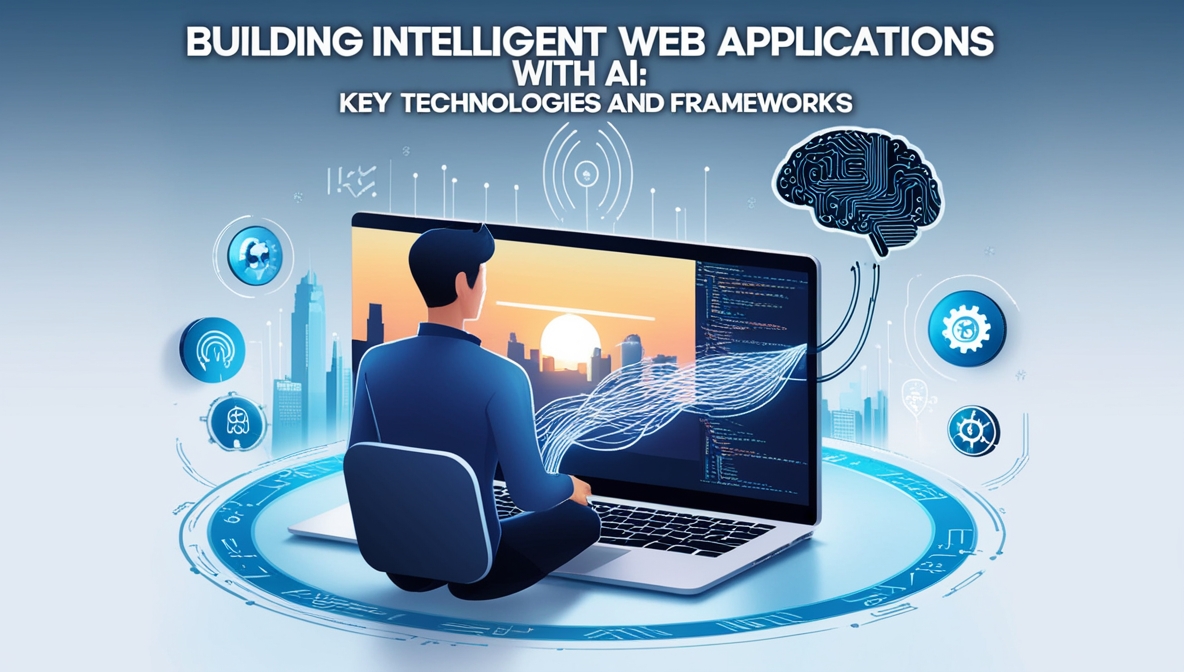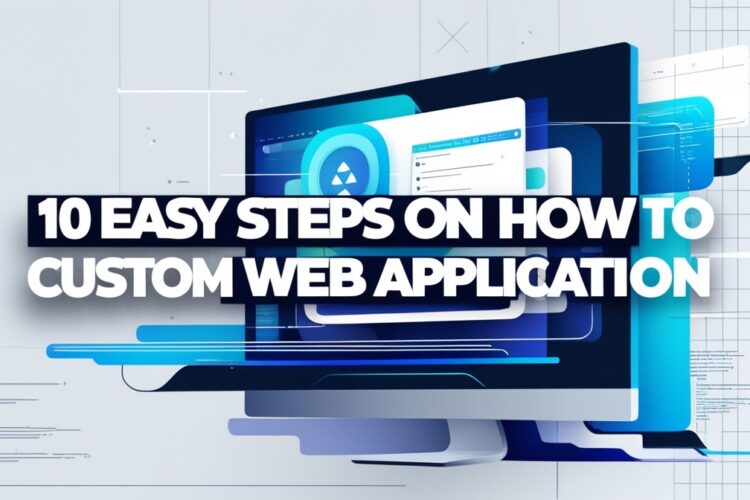
During the many years that I have worked as a professional web developer, I managed to see and be part of the journey that website development took from the old CSS2 style to the modern fancy apps which are decorated as they are working. Nowadays, the Artificial Intelligence (AI) technology came to the scene which made everything change completely. In this article, my main purpose is to highlight what will happen with these applications as the years go by and they become better and better, dealing with robots in an intelligent way.
The Rise of AI in Web Application Development
It has been a long time since the web application was just a simple static HTML. Today, we are already in the era of AI everywhere on web-based technologies that are able to connect with human beings and make things faster and more efficient automatically. AA programmer is the one who can see the power of AI not just in the case of ordinary websites but in the case of websites that are smart enough to change their content or even their appearance according to the user.
Key AI Technologies for Web Applications
1. Machine Learning
Web applications, powered by ML, are the heart of AI programming in web. By bringing Machine Learning (ML) to the scene, web applications are receiving performance boosts. The combinations can be endless – these kinds of algorithms can go through spiritual data and give the exact timing and stretching of applications. They, therefore, have the capability of learning from the data by themselves.
For instance, I remember one project which was an e-commerce platform that used ML to give personalized recommendations. An outcome that was gained here was a 30% increase in user engagement and sales. Apart from the before-mentioned example, there are several other ways in which ML can add value to web application development.
2. Natural Language Processing (NLP)
NLP is one of the best things that have come with the modern Swiss knife either on the phone or other machinery. When the machine becomes the person who understands the other person, it is the point of no return, but it is also the beginning of a new form of the connection that is so crucial in the field of web application development. My experience is that using NLP is a chatbot and voice assistant can more than double the usability and responsiveness of the website.
3. Computer Vision
The Computer Vision is the natural ability of a web application to interpret visual information. I made use of computer vision for different purposes like feature detection and decision support in the projects I worked on. There are several different ways this new capability will be applied to the animation process.
Frameworks and Tools for AI-Powered Web Applications
1. TensorFlow.js
One of the best Libraries out there that can give a developer the power to let the client’s computer do the same computations as the server computers are doing is TensorFlow.js. For Creating a web application of TensorFlow.js, the WebAssembly Based Node can avoid Google Cloud as well as the server for doing the purpose, which of course means there will be no periods of waiting while the server is busy and a lot of data is being processed far from the user. As a result, the processing of user data can be lag-free, and the responses can be provided instantly.
2. Brain.js
Brain.js is simple for the developers that even those who are at the beginner’s level of AI software may use it. With the help of Brain.js, I have had amazing outcomes where an application is able to predict actions based on user data. These include activities like product sales, or even customer behavior.
3. OpenCV.js
For web applications dealing with image recognition tasks, OpenCV.js is a perfect solution. However, there is a related library in OpenCV such as image processing and computer vision algorithms to a gr3eat extent in my practice. One of the best ways of computer vision technology is the Polar Bear “experience” which has greatly enhanced user engagement and interaction within the game.
Integrating AI into Web Application Development
Integrating AI in web application development is a very subjective thing, so the first thing to do is to develop an AI strategy that you can count on. Here are a few things that I would recommend if you want to create smart web applications:
1. Identify AI Opportunities
To find where AI can be the most useful tool in your application just look for those tasks that are prone to failure. This could be, for example, as simple as measuring the user experience, or, respectively, be in the more complex forms of AI such as language processing and image/voice recognition. Based on my past experience I think the success lies in the fact that we have clear visions which AI to use and then everything else.
2. Data Collection and Preparation
High-quality data is a must. You can expect your AI model to perform well only when you have proper datasets that can easily be used to calculate the intensive formulas AI relies on. first and foremost, I always pay special attention to the whole process of data collection which involves different steps including data cleaning. This helps the AI modules make better decisions and turn out accurate predictions.
3. Choose the Right AI Model
Choosing the right AI model is the most crucial part of your web application which will determine the success of your project. There are supervised, unsupervised, and reinforcement learning models. In my projects, I run an in-depth consideration about each model type and potential pros and cons of using each of them before making any decision.
4. Implement and Test
Afterward the AI model should be implemented on the web. Here, the AI components should be incorporated into the architecture of your web application. It should go through a rigorous testing process to ensure the AI features are actually functioning the way they should and consequently adding value to the users.
5. Monitor and Improve
Monitoring and improving AI models need to be a part of our job. One of the roles that I always assign to the developers is a task that involves tracking AI components’ performance in web applications so I can continuously improve and innovate the AI even as users’ actions and data usage evolve over time.
Real-World Applications of AI in Web Development
My years of practice in Web Application Development have given me many chances to look at AI in action, and I have witnessed some brilliant applications of AI. Here are some life examples that have been integrated in websites:
1. Intelligent Search Functions
AI driven search engines can now comprehend users’ intents and contexts, thus providing more precise and relevant results. To provide open and environmentally friendly work spaces, in the past team-building exercises were needed, today the gaming effect plays a major supportive role. In this case, workforces are connected using “knowledge management” which provides the necessary challenge for the teams to face as well as the possibility of establishing a culture of trust.
2. Predictive User Interfaces
AI can analyze the behavior of users and predict the next movement of the user, since the user needs to click a button or do another gesture. As a result, AI becomes a processing power that executes part of the user delight, and I have utilized AI for the correct functioning of different segments in web applications in various sectors.
3. Automated Content Generation
AI is a powerful tool for creating content like descriptions of products, news articles, and posts on social media. Even though we need to be very careful and constantly monitor the AI-generated content, I have experienced the advantages of AI-generated content, as it enhances the productivity in web applications with large content.
4. Enhanced Security
AI creates a differential advantage in web application security as they have a quicker response to ever-evolving cyber threats. Through these security measures, the web applications handle sensitive data with Open Source Security which includes everything right from the physical security, personnel security, operational security, to control mechanisms that ensure the quality of incoming/outgoing data.
Challenges and Considerations
Despite the fact that AI is an inspiring and ubiquitous technology, it also has a series of challenges:
1. Data Privacy and Ethics
Since AI software generally uses large amounts of data, ensuring data privacy and following the ethical guidelines related to the healthcare sector is the most important obligation. My approach is centered on holding a strict data-sharing policy ensuring that the users’ consent and confidentiality are respected.
2. Performance Optimization
The use of AI models is also a key factor since the models put a lot of pressure on limited resources. To achieve the analogs of a smooth, albeit AI-laden experience, across the board, including many settings but definitely those involving the feather-light and minimalistic mobile units, best optimization strategies are needed in software solutions that look ahead at development stages also.
3. Maintaining Human Touch
Although AI is fully capable of automating most of the functions of web applications, human interaction often needs to be maintained. I have always stuck to the philosophy that AI should be used as an instrument that assists human beings in web applications and not that they should replace human labor.
Conclusion
The integration of AI technology into web development is not simply a trend or an instrument, but it is a significant change in the way digital platforms are being made and how we use them. As a developer, I am thrilled by the new opportunities that AI brings along in web development. By using these vital APIs, including chatbot technology, the AI can look at the text interactions of the users and provide them with information in real-time.
As we continue to discover and advance in the field, I am convinced that AI will play a vital role in the whole process of web application development and therefore will remain an integral part of the craft. The key success factors will be to get a grip of the AI domain and of the technologies and to apply them wisely and responsibly. In this way, we can create web applications that not just satisfy but even outperform the user expectations and pave the way for a more intelligent and interconnected digital future.




